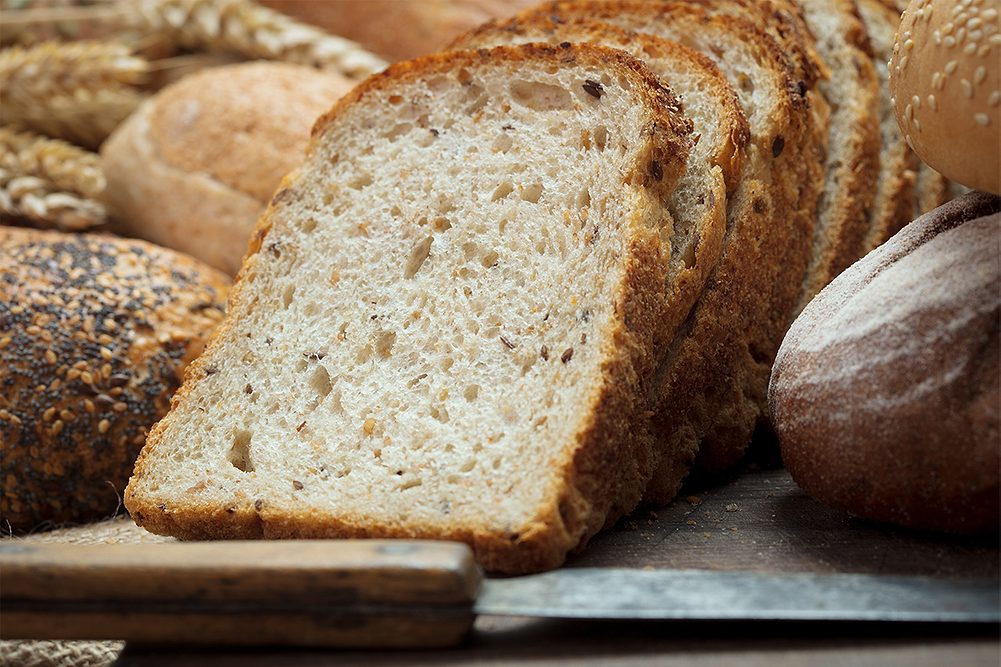It’s no secret that Americans, on average, eat more than our recommended daily amount of sodium. Excessive sodium intake has emerged as a significant health issue, prompting the Food and Drug Administration (FDA) to release voluntary guidelines for reducing sodium levels in a variety of packaged and processed foods. For food manufacturers looking to address this challenge, bread and baked goods may offer the greatest area of opportunity.
Bread and baked goods represent the leading source of sodium consumption for U.S. consumers. This is not due solely to the amount of sodium in these products, but rather the high quantities of these foods the average American eats. Reducing sodium alone often compromises the palatability and consumer acceptance of foods, particularly in bread and baked goods where salt plays a crucial role in both flavor and texture.
That’s where umami comes in.
Dr. Soo-Yeun Lee, a sensory scientist, professor and director of the School of Food Science at Washington State University, has done extensive research on how umami can help reduce sodium in bread and other baked goods, particularly when it comes to palatability and consumer acceptance of lower-sodium breads.
Ajinomoto Health & Nutrition North America, Inc. (AHN) has applied the learnings from Dr. Lee’s studies across a range of baked applications to achieve up to 43% sodium reduction. Through these learnings, AHN has made important discoveries into what benefits can be realized from using umami as a tool to reduce sodium.
The rise of MSG
Umami, one of our five basic tastes, occurs naturally in certain foods like Parmesan cheese and mushrooms, and is often described as the meaty, savory deliciousness that deepens flavor. AHN manufactures the purest form of umami through advanced fermentation technology using locally grown corn to develop the ingredient monosodium glutamate (MSG).
MSG has been used safely and effectively across the globe for over a century, and its potential to reduce sodium is well-researched. According to Dr. Lee, “flavor enhancers such as MSG show promise in mitigating palatability loss that occurs when the sodium content of bread is greatly reduced and thus provide a promising solution to produce breads with an improved nutritional profile.”
What makes MSG such a powerful tool to reduce sodium in bread is that it doesn’t entirely replace salt – it even contains sodium, which is the cation portion of table salt, sodium chloride (NaCl). As the name “monosodium” glutamate indicates, MSG is part glutamate, part sodium, and it works by enhancing umami taste, as well as the perception of saltiness. When added to bread dough, MSG makes the bread taste richer and more satisfying. MSG also boosts the perception of other flavors in the bread. This helps maintain the overall flavor balance of the bread, ensuring it remains delicious despite the lower salt content.
According to the study conducted by Dr. Lee, frequent bread consumers reported caring most about texture, salty taste and the aftertaste when it comes to the palatability of reduced-sodium white and multigrain breads. Following a series of taste tests, the study found that breads with sodium content set at the FDA's long-term goal and supplemented with MSG had little to no difference in acceptance when compared to full-sodium breads.
Changing perception supports innovation
Decades ago, the reputation of MSG among consumers was not favorable. Despite a history of safe and effective use dating back to its discovery in 1908, the use of MSG in the United States was stunted by a letter to The New England Journal of Medicine in 1968. The author reported feeling unwell after eating Chinese food, attributing the symptoms to several possible ingredients, including cooking wine, salt or MSG. The letter was titled “Chinese-Restaurant Syndrome” unfairly implicating a cuisine with a fictious clinical name.
This small piece of misinformation caused a decades-long aversion to using MSG in the United States. But MSG is on the rise, and the perception is changing. Food scientists, health experts and regulatory bodies have repeatedly determined MSG is safe for people to consume. More recently, famous chefs like David Chang and Tim Ma are strong advocates for it, and a top-notch New York restaurant has even added an MSG martini to its menu, highlighting the ingredient’s versatility. As awareness grows and misconceptions are debunked, MSG has the potential to revolutionize sodium reduction efforts in the food industry, not least of all in bread and baked goods.
The growing acceptance of MSG has also been reflected in Dr. Lee’s research. Her study on acceptability of different lower-sodium bread options also examined how the options were perceived in a blind taste test compared to an informed one. Participants that were provided information on the sodium content and presence of MSG in the bread showed no discernible difference in level of acceptance to those conducting a blind taste test. Dr. Lee suggests this reflects that consumers may slowly be progressing toward greater acceptance of MSG.
Promoting the adoption of low-sodium food items has the potential to lower the likelihood of hypertension and mitigate the risk of heart attacks and strokes across the nation. By harnessing MSG’s flavor-enhancing properties, food manufacturers can develop reduced sodium products that meet consumer preferences without compromising taste. As America grapples with the challenge of improving dietary habits, MSG offers a flavorful solution to food manufacturers leading the effort to deliver more nutritious eating choices and combat the adverse health effects of excessive salt intake.






